Creative arts team - Curriculum Support
advertisement
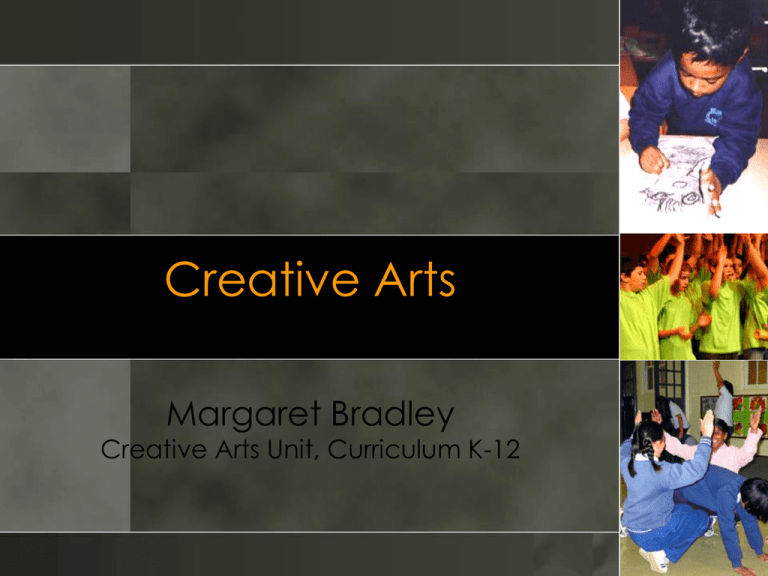
Creative Arts Margaret Bradley Creative Arts Unit, Curriculum K-12 Focus on creative arts o Teaching and learning in creative arts – what is it? o Explicit teaching in the arts-what does it look like? o Assessment in the arts-how do you do it? o Support for COGs and creative arts The arts… o play a significant role in how meaning is made in people’s lives. o provide opportunities for personal expression, enjoyment, creative action, imagination, emotional response, aesthetic pleasure and the creation of shared meanings. o provide opportunities to explore cultures, traditions and to interpret experience. BOS Creative Arts K-6 syllabus Music activity Abba Dabba COGS STRING F Powering on Stage 1 Explicit teaching in music Teaching and learning experiences: o Performing - singing - playing - moving o Organising sound - experimenting, imitating, improvising, arranging, composing and notating o Listening - aural skill development - awareness, discrimination, memory, sequencing, imagination The concepts of music o Duration o Pitch o Dynamics o Tone colour o Structure Repertoire oVocal music oInstrumental music oStudent compositions oMovement Assumptions Drawing/ performing/ dancing/ singing is based on talent and cannot be learned. 2 The arts should be primarily about having fun. 1 The arts are good activities for students of lower academic ability. 3 More assumptions The key outcome in the arts is the performance/ exhibition. 4 The key outcome in the arts is selfexpression. 5 6 Assessment in the arts is subjective. Assessing student artworks destroys confidence. 7 Progress in creative arts o Related to child development o Related to exposure and experience…how many different opportunities have they had to develop their skills? (range and depth) o As students progress they should be able to complete tasks with increasing skill, complexity and independence. In creative arts … o What do you want students to learn? o Why does it matter? o What are you going to get the students to do? o How well do you expect them to do it? In creative arts … o What do you want students to learn? DANCE DRAMA MUSIC VISUAL ARTS Knowledge, skills, understandings in foundation statements Foundation statements … o What must be taught o Common curriculum requirements in creative arts o Encompass outcomes o Allow selection of content for your context DANCE DRAMA MUSIC VISUAL ARTS In creative arts … o Why does it matter? Cognitive and affective learning Artistic and cultural understandings Equity Choice Research In creative arts … o What are you going to get the students to do? Planned activities and explicit teaching of skills and knowledge COGs Scope and sequence Capacity building I can sing or play a musical instrument well. I can dance well. I can act well. I can draw or paint well. EXPLICIT TEACHING IN THE ARTS o Facilitating o Modelling o Participating with students o Investigating with students o Building confidence through practice o Not having to be an expert COG unit: ME (ES1) Consider: How did explicit teaching affect the learning outcomes here? Assessing the creative arts … o How well do you expect them to do it? Establish relevant criteria Criteria acknowledge a range of creative responses Assessment practices apply to visual arts, dance, drama and music Assessment of/for learning o assessment should be an ongoing process of gathering evidence over time o the evidence is drawn from both the processes and finished artworks o it also includes what students say and write about their own works and others' works o assessment should not be based on finished artworks alone Assessment strategies o Observation o Discussion o Assessment of process o Assessment of student work samples o Record keeping Music example – STRING F Outcomes and indicators (Stage 1): MUS1.1 Sings, plays and moves to a range of music, demonstrating an awareness of musical concepts • performs chants and accompanies with ostinato patterns. MUS1.2 Explores, creates, selects and organises sound in simple structures • vary text to create a new chant. MUS1.3 Uses symbol systems to represent sounds • create rhythmic ostinato patterns and notate using a beat grid. MUS1.4 Responds to a range of music, expressing likes and dislikes and the reasons for these choices • experiences the relationship between beat and rhythm patterns while performing • identifies use of tempo and dynamics in student performances. Assessing within this COG Assessment strategy The teacher: • observes student’s participation in class activities. Assessment criteria The student: • performs chants • accompanies chanting with body percussion and other ostinato patterns • performs and creates patterns using a beat grid • performs and creates own chants • recognises variations in tempo and dynamics. These criteria relate to outcomes MUS1.1, MUS1.2, MUS1.3, MUS1.4. Support for COGs For work samples, additional strategies, professional learning opportunities Curriculum K-12 website: creative arts www.curriculumsupport.education.nsw.gov.au Support for COGs We would like to include you on our network, so we can continue to support you in your teaching of COGS and the creative arts in your schools. Contact Margaret Bradley PHONE 9886 7530 FAX 9886 7655 EMAIL margaret.bradley@det.nsw.edu.au
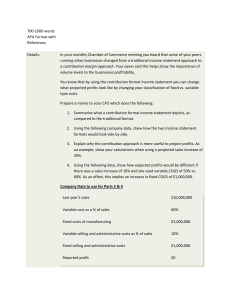
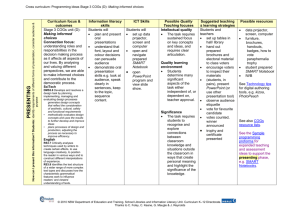
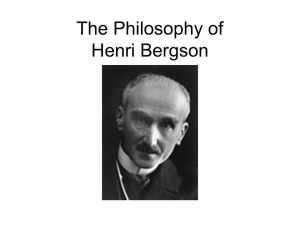
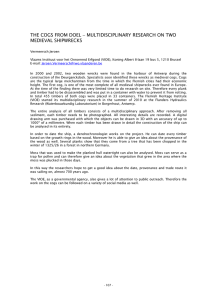

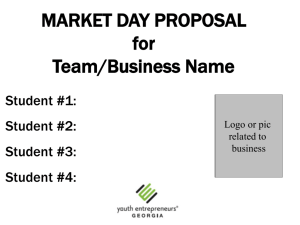

![[Name of Business]](http://s2.studylib.net/store/data/005439490_1-eb485795b6ab94ac46e88cc0426770e1-300x300.png)